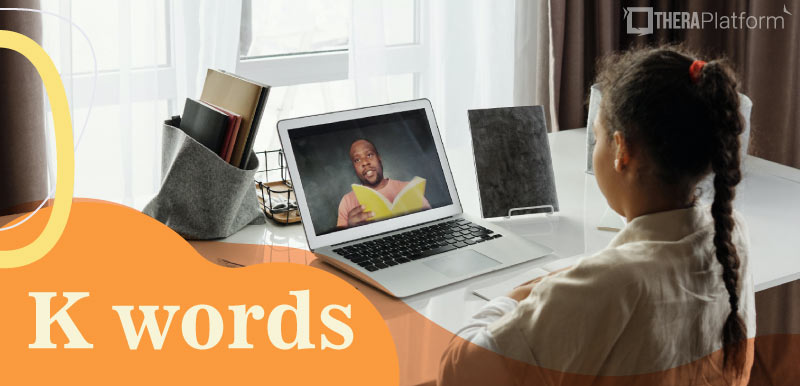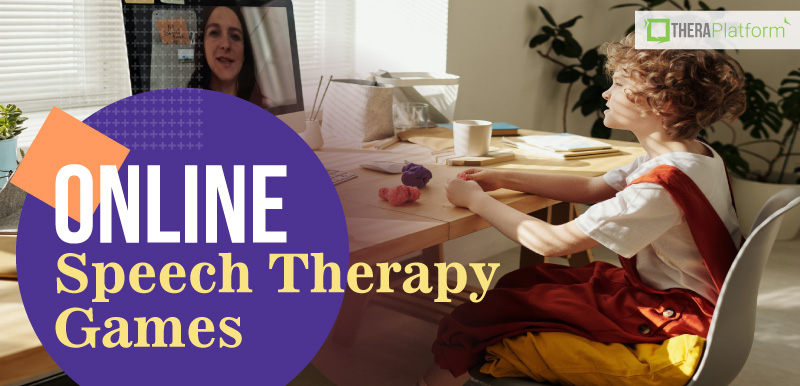L words

L words are one of the most common errors for those with a speech-sound disorder, such as an articulation or phonological disorder, which affects 8 to 9 percent of all children in the U.S.
Pronouncing an /l/ word requires the client to lift their tongue tip up, behind the top front teeth. Once the tongue tip makes contact with the alveolar ridge, the client then turns their voice on to produce the /l/sound.
But chances are, you’ve come across several children who say “white” for light and “yike” for like.
By 4 years old, most children should be able to produce the /l/ sound. It’s expected that other, unfamiliar people can understand 100% of a child’s speech by the time he or she is 5 years old. Having difficulty pronouncing the /l/ sound can significantly decrease a child’s speech intelligibility.
Speech-language pathologists often treat children who have trouble articulating the /l/ sound because the child uses the phonological process of gliding. Gliding occurs when the child substitutes a glide sound (/w/, /y/) for a liquid sound (/l/, /r/).
According to developmental norms, the phonological process of gliding should be resolved by age 6. Not only can having difficulty producing the /l/ sound affect a child’s speech intelligibility, it can have a negative impact on the child’s reading and writing development. A child may start to spell words the way that they pronounce them. Therefore, an /l/word might be replaced with the letter “W” or “Y”.
To prevent social and academic consequences like these, it’s important for a child to be able to accurately make the /l/ sound and articulate /l/ words.
If you’re an SLP with clients on your caseload who have been struggling to articulate /l/ words, help is here.
Try these tips and effective therapy exercises with your clients to elicit the /l/ sound. You can also use our list of /l/ words to work on the /l/ sound across different word positions. Your client will be able to say, “lollipop”, “lunch” and “lemonade” in no time.

Download our Ultimate Articulation Guide

Exercise #1: A Sweet Technique
Having trouble figuring out the correct tongue placement is a common challenge for children when learning the /l/ sound.
The solution? A sweet incentive. Use a gloved hand to place and hold a Cheerio behind the child’s top front teeth, on the alveolar ridge. Then, ask the child to use their tongue tip to hold the Cheerio in that spot as you remove your finger.
Once the child is able to successfully place their tongue in this spot, instruct him or her to “hum” or “turn on their voice”, to produce the /l/ sound. After making a prolonged /l/sound in isolation, the child can release their tongue and eat the Cheerio. Other ideas for this exercise are Fruit Loops, Smarties Candy, or something similar in size and shape that motivates the child to work at their speech sound and pronounce /l/ words.
Exercise #2: Sing, “La La La”
Anytime you introduce a new sound when working with a client on articulation, it’s important to follow the hierarchy of complexity.
Start with eliciting the sound in isolation. Before moving to a complex, multisyllabic word like “lizard” or “lemonade”, try working on the /l/sound in simple syllables.
Using a mirror to provide your client with visual feedback, talk to them about how you’re going to put your tongue tip up, behind your front top teeth, and use your voice to sing “la la la”. Then, ask the child to take a turn at articulating these /l/ sounds.
Visual and verbal cues are key when working on the /l/sound, as it can help children correct an established motor pattern of rounding their lips or keeping their tongue down for the /l/ sound.
Try the /l/sound in other syllables as you and your client sing, like “lo lo lo”, and “lee lee lee” to keep therapy fun and engaging.
Exercise #3: Use Minimal Pairs
Minimal pairs are two words that differ by a single speech sound. They can be very useful in speech therapy because they highlight the difference between two different phonemes for a child. This shows that the sounds can change the meaning of the word.
If you are an SLP working with a child who applies the phonological process of gliding when trying to make the /l/sound, minimal pairs can be very helpful in increasing the child’s awareness of the /l/sound.
With a child who uses this type of sound error, you can use minimal pairs with /w/ versus /l/ or /y/ versus /l/. Show the child picture cards of one pair at a time, asking him or her to point to the word you say.
Here are some examples of /l/ words and similar words:
- Light/white
- Lawn/yawn
- Leap/weep
- Lick/wick
- Lose/use
If the child seems to be able to hear the difference between the contrasting sounds, try having him or her say each pair of words.
Start 30-day Free Trial and explore TheraPlatform. HIPAA Compliant Video and Practice Management Software for Therapists.
Exercise #3: Games for /l/ words
Keep articulation therapy fun.
Remember, children work hard and pay attention when they’re having fun and are interested in the activity. So incorporate some fun games into your sessions to target the /l/sound and /l/ words.
Share your screen to play engaging virtual activities over teletherapy. On Kokolingo, for example, SLPs and clients can engage in a variety of activities that target the /l/sound (along with over 30 other speech sounds) from isolation up to sentences. TheraPlatform also features a suite of games for SLPs in its ProPlus plan.
You can also engage in games live during in-person sessions or by using your camera during teletherapy sessions to help your client pronounce /l/ words.
Chutes and Ladders is a classic game that can be played by children who are at a range of ages. It’s a great game for working on the /l/ sound, because there are several natural ways for the client to practice this sound in /l/ words like “ladder”.
Another /l/ word-loaded game? The Ladybug Game. It’s another favorite of SLPs because it’s simple enough that even younger clients can keep up with the structure of the game. It also has multiple opportunities for your client to practice their target sound in /l/ words like ladybug, like, lose, look, and like.
Word Lists for /l/
Initial Position
1-Syllable
Leg | Light | Last | Lip | Lime |
Like | List | Large | Lake | Last |
Leaf | Left | Lift | Line | Lamp |
Loose | Loose | Lunch | Lake | Lock |
Multisyllabic
Lizard | Lion | Lego | Llama | Letter |
Laundry | Lemon | Leopard | Lobster | Lettuce |
Luggage | Leopard | Later | Lightning | Lollipop |
Ladybug | Lemonade | Living Room |
Medial Position
Pillow | Airplane | Alike | Balloon | Alligator |
Broccoli | Butterfly | Caterpilla | Chocolate | Celery |
Color | Gorilla | Helicopter | Jelly | Marshmallow |
Polar bear | Salad | Television | Telephone | Umbrella |
Yellow | Envelope | Elephant | Dollar | Hello |
Jello | Toilet | Police | Melon |
Final Position
1-Syllable
Oval | Whale | Pole | Tall | Owl |
Ball | Girl | Snail | Call | |
Fall | Pool | Bell | Spill | Pull |
Pail | Hole | Hill |
Multisyllabic
Apple | People | Equal | Towel | Turtle |
Bicycle | Smile | Puzzle | Puddle | Popsicle |
Pickle | Noodle | Squirrel | Table | Tickle |
SLPs working with individuals who have an /l/ word articulation disorder or phonological disorder can utilize TheraPlatform for helpful resources including worksheets, tools, e-books, videos, and handouts. They also feature a suite of games and apps for SLPs as part of their Pro Plus plan.
If you are starting a private practice or own a private practice, use TheraPlatform to manage several aspects of your practice, from scheduling to documentation to financial organization. Consider starting with a free 30-day trial of TheraPlatform today.
Resources
More resources
- Therapy resources and worksheets
- Therapy private practice courses
- Ultimate teletherapy ebook
- The Ultimate Insurance Billing Guide for Therapists
- The Ultimate Guide to Starting a Private Therapy Practice




